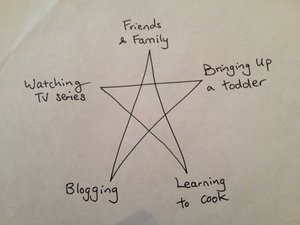Lesson ideas for Day One
English Teaching Professional, January, 2015

It’s the start of a new year and the start of a new school term. For some, it’s the start of a new school year, and for others, it might be the start of a new language course. Whatever teaching context you might be in, it is likely that you will be meeting new students in a new class this week.
And let’s not underestimate the nerves that can come with such an intimidating (or ‘wildly adventurous’ if you are the optimistic sort) prospect. And it doesn’t matter how many years of teaching experience you have; meeting a new class is always kind of scary.
So you spend the night before the course starts worrying, fretting, and trying to prepare and plan for your first lesson with them. Should you try and impress them with your best lesson on conditionals? Or should you try and ‘wow’ them with an exciting lesson that combines the latest YouTube video played from your iPad with the projector function of the Interactive White Board?

On my first lessons, I find it best (for my nerves) to focus on getting to know my students and allowing them a chance to get to know me. After all, it is also their first time meeting me, and they might be just as nervous and are probably thinking, “Why on earth should I trust her?”
I also strongly believe that in order for students to open up in class (and you can’t deny that most fluency speaking practice activities require a lot of opening up and trusting on the part of the students), students have to get to know one another and learn to trust each other.
So the main aim of my first lessons is usually:
To allow students to practice freer speaking through ‘getting-to-know-you’ activities while learning the importance of speaking practice.
Of course, that doesn’t mean language use goes out of the window.
I strongly recommend teachers to carry a notebook and pen with them at all times during the lesson so that when monitoring speaking practice, you can make note of language mistakes, especially those that impede understanding, and also of good use of language and good examples of meaning clarification.
The sub-aim of my lesson would therefore be:
To help students to notice the mistakes they make when speaking and how it affects mutual understanding, and to help them correct and improve on their language use. To encourage students to learn from each other’s good use of language.

Without further ado, here are some of my favourite activities for Day One of a course:
The ball name game
This is a great game for helping students (and the teacher) to remember each other’s names.
Step 1
Students (and teacher) stand in a circle. A small ball is thrown around the circle.
Each time a student catches the ball, they have to say their name.
Step 2
This time, when the student catches the ball, they say their name and one interesting fact about themselves.
Step 3
The student says their own name and then says another student’s name while throwing the ball to him/her.
Step 4
The student says their own name and then says another student’s name and one interesting fact about them before throwing the ball to him/her.

Standing in order
The teacher asks students to arrange themselves so that they are standing in alphabetical order of their names. Remember to give students the chance to interact freely among themselves without interference from the teacher while arranging themselves in the right order.
When students think they are in order, the teacher gets them to say their names one by one (starting from ‘A’ through to ‘Z’).
The teacher then gets students to arrange themselves in alphabetical order of the town/city they were born in. (If all the students are from the same town or city, get students to arrange themselves according to their last holiday destination.)
Other variations include: in chronological order of their date of birth, in alphabetical order of the last film they saw, etc.
Ask me, Ask me
This simple activity has been putting students in groups of 3.
Each group then has to discuss and come up with 3 questions that they’d like to ask me.
I tell students that this is their one chance to ask me ANY question under the sun and I’ll try my best to answer them. Questions tend to be of a personal nature, e.g. How old are you? Are you married? Why/Why not? Why do you choose teaching as a profession? What would you do if you weren’t a teacher? Who’s the worst student you ever had? What will you do if we don’t do our homework? Which celebrity do you fancy? etc.
Making use of the fact that students are in groups of 3, I tell them that their questions would have to be in correct English before I would answer them and that usually gets them thinking about the form and not just the content of the questions.

The Job Interview
I tell students that I’m applying for the job as their teacher and that they get to interview me for the job and judge if I’m a suitable candidate.
As part of the preparation phase, I leave the room after setting the task. Students get 5-10 minutes to discuss the structure of the interview and the questions they would like to ask without me hovering over them.
I return to the room after a set time and sit in a chair in front of the panel of students/interviewers.
I answer the questions à la a job interview (albeit while taking notes of students’ language use as discreetly as I possibly can).
An extended version of this activity sees students getting interviewed for the role of ‘student of the class’. This focuses on their responsibilities and the duties they have to carry out as a student.
A delayed correction slot at the end of the activity sees me writing down examples of their language use on the board and eliciting correction.
The Star
I draw a star on the board with five points and at the end of each point, I write something that is important to me (see picture below)

I talk through each point, explaining why they are important to me, e.g. I enjoy watching television series and love feeling addicted to them.
Currently, I’m going through The Walking Dead and really enjoying the character development in the series; I have a toddler at home and a huge part of my life is spent thinking about how I should bring her up and how discipline can be instilled and a framework established without sacrificing fun, creativity, love and sense of exploration; etc.
I then get students to work individually, drawing their own stars and writing five things that are important to them.
When students are done, I put them in pairs to discuss their stars.
In a class feedback session, students report to the rest of the class on what they learnt about their partners.

The Class Contract
I explain that this is the start of a relationship between us and that every relationship has a framework to work within.
I ask students what they think my role in the class might be. In groups of 5, they make a list of my responsibilities. They present this in open class feedback.
I then ask students what they think their role in the class might be. Again, in their groups, they make a list of their responsibilities. They present this in open class feedback.
Students are then asked to write out a contract between teacher and students – a contract that details how teacher and students are expected to behave and the rules and regulations of the classroom. (Surprisingly, students can be quite tough on themselves. We often end up with rules like ‘Students must hand in homework on time’, ‘Students must not use mobile phones for private messaging and games that are unrelated to the class’, ‘Students must not be more than 5 minutes late for their lesson’, etc.).
When the final version of the contract is agreed on by the whole class, everyone signs at the bottom of the contract and this is pinned up on the wall at the back of the class.
For the rest of the course/term, I refer back to the contract they have signed, especially if a rule they created has been broken. They then have to decide collectively on the penalty for breaking that particular rule.

I hope you have a great Day One and a fantastic first course of the year! May you have many more memorable courses and students to come!
NB: Please note that I did not invent any of the above lesson ideas. They are ideas that I have collected and adapted via staffroom discussions, watching other colleagues, and experimenting with teachers’ resource materials over the years. Like a well-known nursery rhyme some of these ideas have done their rounds in TEFL classrooms to the point where nobody actually remembers who first came up with them. I apologise if anyone feels that these ideas belong to them.
Chia Suan Chong is a General English and Business English teacher and teacher trainer, with a degree in Communication Studies (Broadcast and Electronic Media) and an MA in Applied Linguistics and English Language Teaching from King’s College London.
Fascinated by the interplay between culture, language and thought, Chia is also an intercultural skills trainer and materials developer, and is now based in York.
She is also the voice of @ETprofessional on Twitter. You can find out more about her on her blogsite www.chiasuanchong.com


Comments
Write a Comment
Comment Submitted